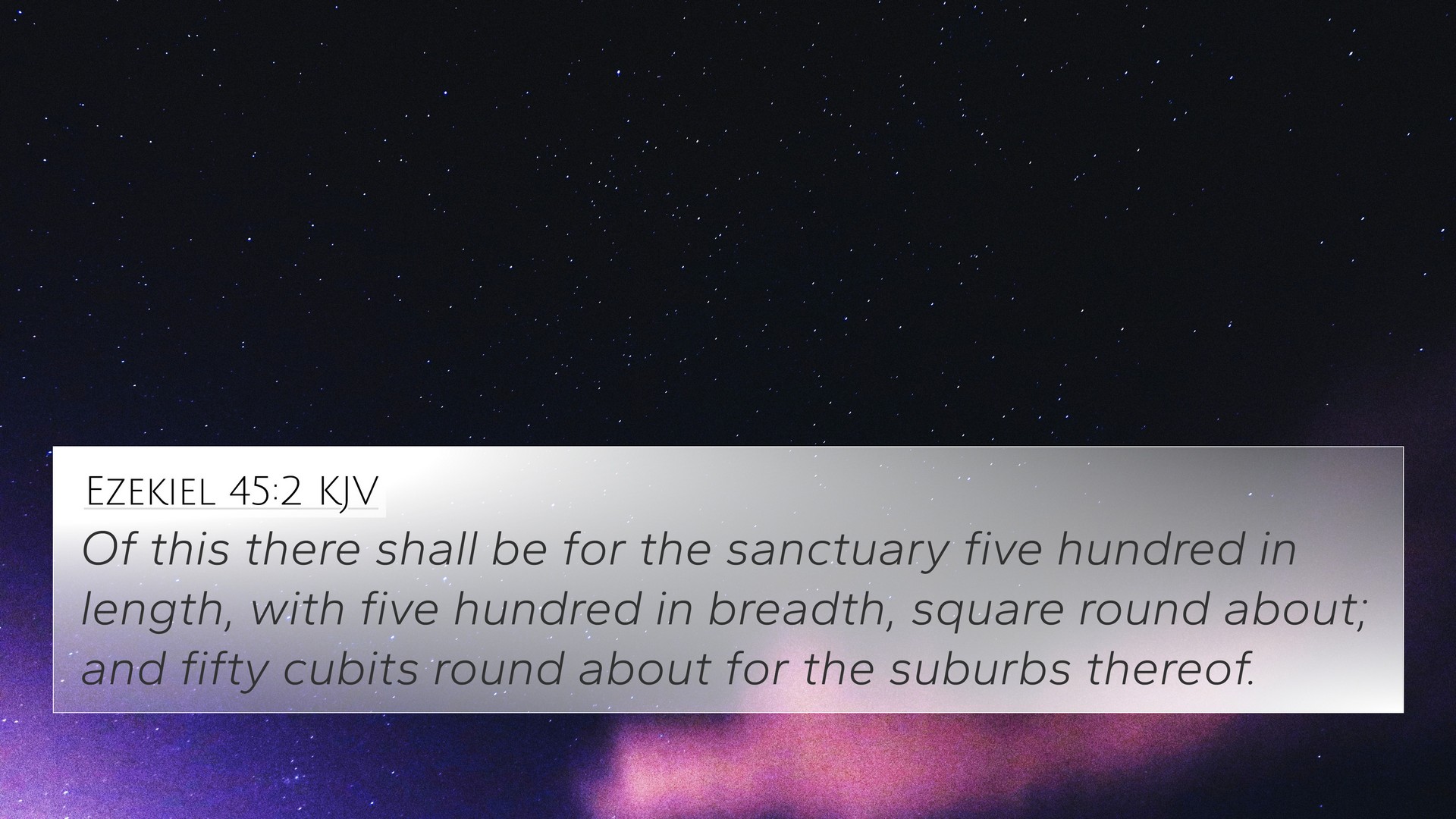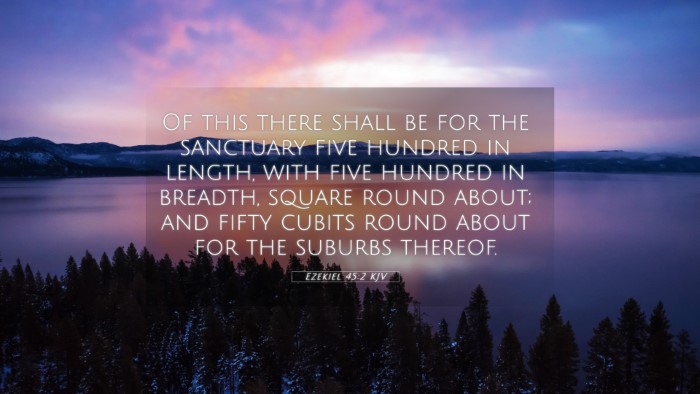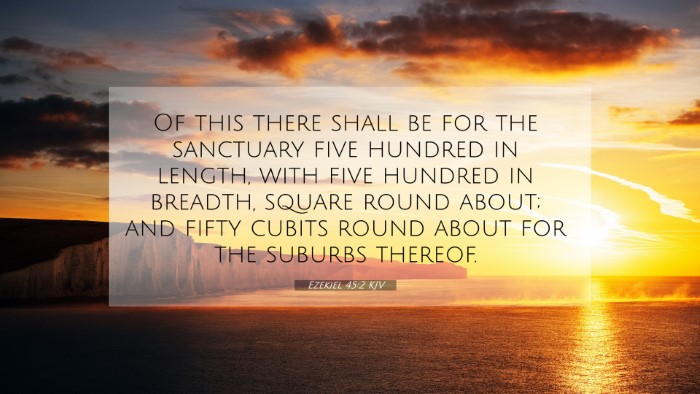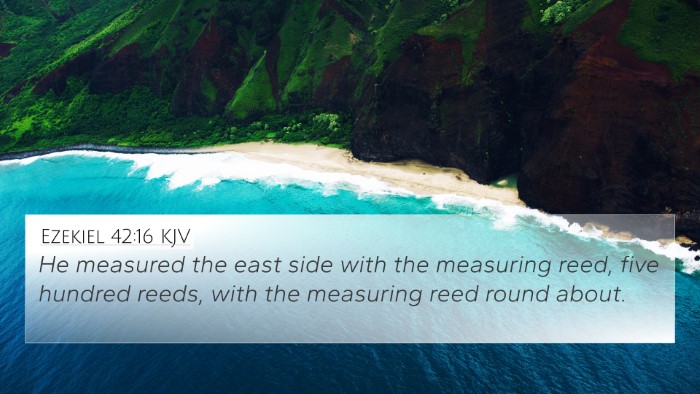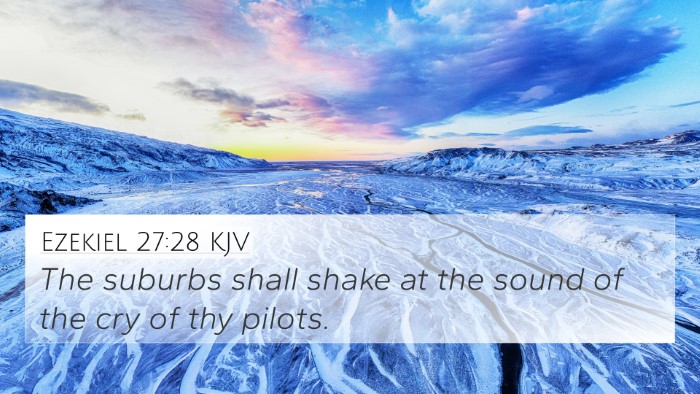Ezekiel 45:2 - Meaning and Interpretation
Ezekiel 45:2 states, "Of this, there shall be a measure for the holy portion: five and twenty thousand reeds in length, and ten thousand in breadth." This verse is part of Ezekiel's vision for the future temple and land distribution in Israel, revealing significant insights into God's plans for His people.
Summary of Key Themes
- Holy Portion: The concept of a 'holy portion' signifies a designated space for worship and the presence of God among His people.
- Dimensions: The specified dimensions indicate divine order and measure in God's dealings, reflecting His sovereignty.
- Connection to Land: This passage establishes a connection between the land, the people, and their worship, emphasizing the importance of sacred space.
- Future Restoration: Ezekiel's prophecies often point to restoration and hope for Israel, indicating that God has not forgotten His covenant with His people.
Commentary Insights
Matthew Henry's Commentary emphasizes that this measurement serves as a divine arrangement for public worship, delineating the worship area and how God intends for His people to come together in reverence. The division of land signifies the importance of setting apart a space for God, illustrating the idea of holiness needed in worship.
According to Albert Barnes, this verse illustrates the precise nature of God's plans. The details in the measurements reflect God's meticulous care in establishing worship and governance among His people, allowing them to see the importance of holy living and the prioritization of God's presence in their midst.
Adam Clarke expands on the implications of this passage by linking it to other parts of scripture, suggesting that the holy portion represents not only a physical space but also a spiritual state that the people are called to uphold. It serves as a reminder of their covenant relationship with God and the centrality of worship in their lives.
Bible Verse Cross-References
This verse relates to various other scriptures that share similar themes or context. Here are some key cross-references:
- Psalm 78:68-69: God chose the tribe of Judah and Mount Zion, indicating the choice of sacred space for His people.
- Revelation 21:2: The new Jerusalem as a holy city, further enhancing the theme of sacred space.
- Ezekiel 48:20: More detailed measurements of the city, illustrating God's definitive planning.
- Numbers 34:1-12: God's instructions on land allocation to the Israelites echoing similar themes of division and worship space.
- 1 Corinthians 3:16-17: The New Testament perspective highlighting that believers are the temple of God.
- Hebrews 9:1: Discussing the first covenant and the regulations of worship, continuing the importance of structured worship.
- Isaiah 2:2-3: A prophetic movement for the house of the Lord to be established as a holy worship space.
- Luke 19:46: Jesus cleansing the temple, reaffirming the significance of sacred spaces in worship.
- Matthew 5:14: The idea of believers as a light set on a hill, representing visibility and sanctity of sacred living.
- Hebrews 10:25: The importance of not forsaking assembly as a reminder of the communal aspect of worship.
Connections between Bible Verses
Exploring the connections between Bible verses can deepen understanding. Ezekiel 45:2 serves as a passage that can be linked to various other scriptures, enhancing the thematic connections and providing a broader context:
Thematic Bible Verse Connections
Cross-referencing Biblical texts help illustrate the continuity of God's plan throughout scripture. These references create a network of insights:
- Land and Worship: God’s intention for land reflects His desire for worshipers; see also Matthew 5:5, blessed are the meek, for they will inherit the earth.
- God’s Presence: Exodus 25:8 highlights God's desire to dwell with His people, paralleling the concept of the holy portion in Ezekiel.
- Restoration after Exile: Jeremiah 29:10-14 speaks to the promise of restoration, which ties into Ezekiel’s vision.
Practical Applications and Study
For those interested in conducting a cross-reference Bible study, here are some tools and resources that can enhance understanding:
- Bible Concordance: Useful for finding words and themes throughout scripture.
- Bible Cross-Reference Guide: A structured method to navigate related verses.
- Comprehensive Bible Cross-Reference Materials: Aggregating biblical passages and themes.
- Cross-Referencing Bible Study Methods: Strategies for conducting in-depth studies.
Conclusion
In Ezekiel 45:2, we find more than just dimensions for land; we discover God's heart for worship, holiness, and community among His people. By exploring the rich tapestry of related verses, we see how this one scripture can link to broader narratives within the Bible, supporting the understanding of God's covenant and intention to dwell with humanity.
Engaging with these connections not only deepens biblical literacy but also encourages believers to embrace the overarching message of scripture: that God's presence among His people is significant and holy.
